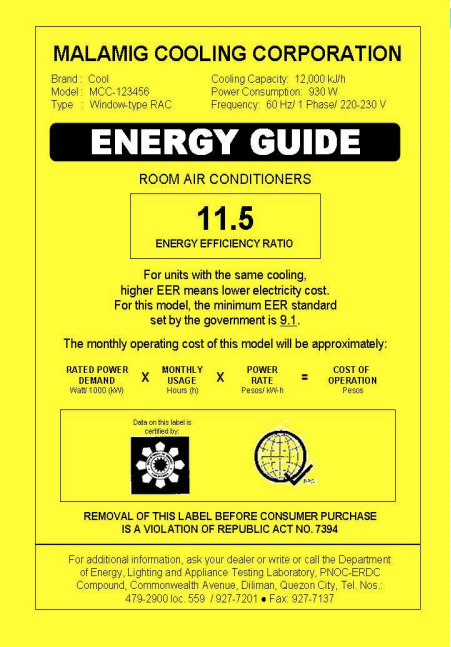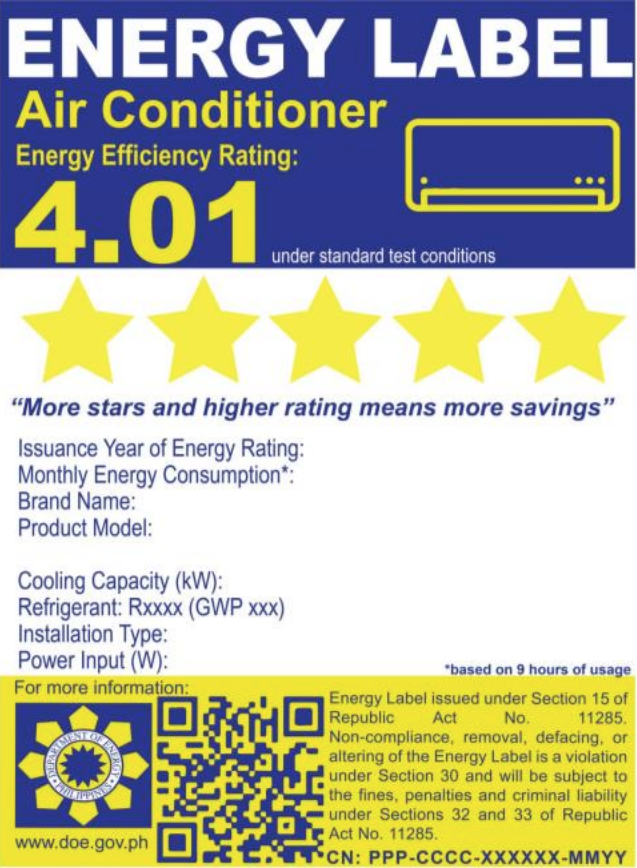How is Energy Efficiency Labeling Working in the Philippines?
CLASP and Philippines partner Innogy Solutions, Inc. conducted a consumer, retailer, and industry survey of the efficacy of the Philippine Energy Labeling Program after a 2021 redesign.
The importance of energy label design
Energy labels are an important tool for consumers to better understand the use and benefits of appliance efficiency. When understood, labels encourage the uptake of high efficiency appliances. However, effectiveness depends on how clearly the information is presented and if the benefits of efficiency are understood by consumers.
Labels present technical information, such as Energy Efficiency Ratios and unfamiliar measures like kWh, which can present a barrier to consumer understanding. Making label designs accessible to the general population is crucial to ensure their intended benefits.
“Appliance energy efficiency labeling is an extremely effective tool — but only if it reaches the customer,” says Lina Kelpsaite, Manager at CLASP.


In collaboration with the Philippines Department of Energy (DOE), CLASP and local partner Innogy Solutions, Inc. conducted research to evaluate consumer, retailer, and industry understanding and awareness of the Philippines’s newly redesigned label, as well as overall perceptions of the entire labeling scheme. This informed recommendations to the DOE on opportunities to inform label communication strategies and in turn strengthen the newly launched Philippines Energy Label Program (PELP).
The New Philippine Energy Label
Since 1995, the Philippines DOE has used comparative energy labels for regulated products. In June 2021, the Philippines adopted the Philippine Energy Labeling Program (PELP) Implementing Guidelines, which established the PELP and included revised Minimum Energy Performance requirements for Products (MEPP) and labeling requirements for ACs, refrigerating products, lighting products, and TVs.
The Guidelines introduced a new energy label design that includes a 5-star rating system, enabling consumers to compare efficiency levels when deciding which product to buy. The slogan “More stars and higher rating means more savings” clearly conveys the structure of the new star-rating system. The label also includes a QR code for consumers to access additional product and performance information online.
Understanding Perceptions of the Label
The findings from the CLASP and Innogy Solutions, Inc. report include:
- Most consumers familiar with the Philippine Energy Label agreed that the new star-rating label is more effective than the old yellow label (82%) and expressed interest in the new QR code feature (85%).
- Consumers consider price as the most important factor when buying ACs. 60% identified high prices as a barrier to buying efficient ACs, and 70% are motivated by discounts when they purchase appliances.
- While most consumers prioritized energy efficiency when purchasing an AC, it was more of a priority for high-income households than for low-income households.
- 85% of retailers believed that energy labels help them sell more efficient ACs and 89% use the labels in their promotional materials at least sometimes.
Recommendations
Recognizing the PELP star-rating label was only recently launched, recommendations include:
- A roadmap for label revision to ensure the label keeps up with technological advancements and market evolution
- Consumers guidelines for understanding the label, including how to interpret the star-rating
- More high-visibility trainings for retailers/industry
- Partnerships with the Philippine Statistics Authority and Department of Trade and Industry to maximize resource efficiency and extend the reach of messaging
- To learn more about CLASP’s recommendations and findings on AC ownership, AC purchasing behavior, and energy label and PELP awareness, check out the full report.
Relevant Reading:









